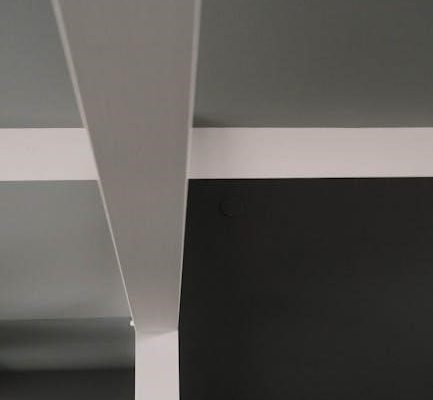Points, lines, and planes are fundamental geometric concepts. Worksheets provide structured exercises to identify, label, and draw these elements, enhancing understanding through practical tasks and visual diagrams.
1.1. Definition of Points, Lines, and Planes
In geometry, a point is a fundamental concept representing a precise location in space, with no dimension (length, width, or height). A line is a straight, one-dimensional path connecting two points, extending infinitely in both directions. A plane is a flat, two-dimensional surface that extends infinitely in all directions, defined by at least three non-collinear points. These basic elements form the foundation of geometric studies, allowing the description of shapes, structures, and spatial relationships. Understanding these definitions is crucial for analyzing more complex geometric concepts and solving problems effectively.
1.2. Importance of Understanding Basic Geometric Concepts
Understanding basic geometric concepts like points, lines, and planes is essential for building a strong foundation in geometry and higher-level mathematics. These concepts serve as the building blocks for analyzing shapes, spatial relationships, and more complex structures. They are critical for problem-solving in various fields, including engineering, architecture, and physics. Grasping these fundamentals enhances visualization skills, enabling better comprehension of how objects interact in space. Additionally, these concepts improve critical thinking and logical reasoning, which are vital for academic and real-world applications. Mastery of these basics ensures a smoother transition to advanced geometric principles and their practical implementations.
Definitions and Concepts
Understanding definitions of points, lines, and planes is crucial for solving geometric problems accurately. Clear concepts ensure proper application in various mathematical scenarios, forming the foundation for advanced geometry.

2.1. What is a Point in Geometry?
A point in geometry is a fundamental concept representing a precise location in space. It has no dimensions—no length, width, or height—and is often depicted as a small dot. Points are essential for defining lines, angles, and shapes. They are typically named with uppercase letters, such as point A or point B. In coordinate geometry, points are identified by their coordinates (x, y) on a plane. Understanding points is critical, as they form the building blocks for more complex geometric concepts. Accurately identifying and labeling points is a key skill in solving geometric problems and worksheets.

2.2. What is a Line in Geometry?
A line in geometry is a continuous set of points extending infinitely in two directions. It has no thickness or width, only length. A line can be straight or curved and is often represented by two points. Lines are one-dimensional and can be named using letters or equations. They form the basis for angles, planes, and shapes. In coordinate geometry, lines are described by equations like y = mx + b. Lines can be parallel, perpendicular, or intersecting. Understanding lines is essential for solving problems involving angles, slopes, and distances. They are fundamental in constructing geometric figures and solving real-world math problems.
2.3. What is a Plane in Geometry?
A plane in geometry is a flat, two-dimensional surface that extends infinitely in all directions. It has no thickness and is defined by the property that every point on the plane is equidistant from a central axis. A plane can be visualized as an endless, smooth sheet of paper. It is uniquely determined by three non-collinear points or by a line and a point not on the line. Planes are fundamental in geometry and are used to describe surfaces, areas, and spatial relationships. They are essential for understanding concepts like area, volume, and the relationships between shapes in three-dimensional space.

Types of Lines
In geometry, lines are classified into straight, curved, parallel, and perpendicular types. Straight lines extend infinitely without bending, while curved lines form angles and shapes. Parallel lines never intersect, and perpendicular lines meet at right angles, creating 90-degree intersections.
3.1. Straight Lines

A straight line is a set of points that extends infinitely in both directions without bending or curving. It has a constant slope and can be represented by a linear equation. In geometry, straight lines are fundamental for constructing shapes and understanding spatial relationships. They are used to form the sides of polygons, axes of coordinate systems, and boundaries of planes. Unlike curved lines, straight lines do not change direction and are essential for measuring distances and angles accurately. Identifying straight lines in diagrams is a basic skill in geometry, often practiced in worksheets to reinforce foundational concepts.
3.2. Curved Lines
A curved line is a continuous line that does not form a straight path and lacks a constant slope. It can be circular, elliptical, or irregular, depending on its shape. Curved lines are used to represent non-linear relationships and are essential in geometry for constructing circles, spheres, and other complex shapes. Unlike straight lines, curved lines do not extend infinitely in the same direction and often form closed loops or open-ended paths. Identifying and drawing curved lines is a common exercise in geometry worksheets, helping students understand their properties and applications in real-world scenarios, such as architectural designs or natural forms.
3.3. Parallel Lines
Parallel lines are straight lines that never intersect and maintain a constant distance apart. They have identical slopes, meaning they rise or fall at the same rate. When a transversal intersects parallel lines, corresponding angles are equal, and alternate interior angles are equal. These properties are fundamental in geometry for solving problems and proving theorems. Identifying parallel lines is a common exercise in worksheets, enhancing spatial reasoning and understanding of linear relationships. They are crucial in constructing shapes like parallelograms and in real-world applications such as railroad tracks and architecture. Practicing with parallel lines helps solidify foundational geometry skills.
3.4. Perpendicular Lines
Perpendicular lines are straight lines that intersect at a right angle, forming a 90-degree angle. They are characterized by having slopes that are negative reciprocals of each other. For example, if one line has a slope of ( m ), the perpendicular line will have a slope of ( - rac{1}{m} ). Identifying perpendicular lines is crucial in geometry, as they are fundamental in constructing shapes like squares, rectangles, and right triangles. These lines are also essential in graphing and solving real-world problems involving right angles. Practicing with perpendicular lines enhances understanding of angular relationships and spatial orientation in geometry.

Types of Planes
In geometry, planes are flat, two-dimensional surfaces that extend infinitely in all directions. Planes can be classified into different types based on their orientation, such as horizontal, vertical, or inclined, each with distinct characteristics and applications in spatial analysis and problem-solving.
4.1. Horizontal Plane
A horizontal plane is a flat, level surface that extends infinitely in all directions. It is parallel to the horizon and perpendicular to the vertical direction. In geometry, a horizontal plane is often represented by the xy-plane in a coordinate system. This plane remains at a constant height, meaning it does not slope or incline. Horizontal planes are fundamental in various applications, including architecture, engineering, and geography, where they serve as a reference for mapping and designing structures. Understanding horizontal planes is essential for analyzing spatial relationships and orientations in three-dimensional space.
4.2. Vertical Plane
A vertical plane is a flat, two-dimensional surface that extends infinitely upward and downward; It is perpendicular to the horizontal plane and often serves as a reference for measuring vertical distances or heights. In coordinate geometry, the yz-plane is an example of a vertical plane. Vertical planes are crucial in applications like architecture, engineering, and physics for analyzing structures and forces. They are also essential in understanding spatial orientations, as they intersect horizontal planes at right angles. Recognizing vertical planes helps in solving problems involving elevation, depth, and three-dimensional spatial relationships.
4.3. Inclined Plane
An inclined plane is a flat, two-dimensional surface tilted at an angle relative to the horizontal plane. It is neither parallel nor perpendicular to the horizontal plane, forming a slope. Inclined planes are commonly used in physics and engineering to reduce effort when lifting objects. For example, ramps, staircases, and sloping roofs are real-world applications of inclined planes. In geometry, inclined planes can intersect other planes, creating lines of intersection. Understanding inclined planes is essential for solving problems involving slopes, angles, and spatial relationships in both practical and theoretical scenarios.

Collinearity and Coplanarity
Collinearity refers to points lying on a single straight line, while coplanarity describes points existing within the same two-dimensional plane, crucial for solving geometry problems.
5.1. Collinear Points
Collinear points are a set of points that lie on the same straight line. This means that no matter how many points are present, they all align perfectly without forming any angles or curves. Understanding collinear points is essential in geometry, as they form the basis for constructing lines and solving various geometric problems. In practical terms, identifying collinear points helps in determining the alignment of objects in real-world scenarios, such as engineering designs or architectural layouts. Worksheets often include exercises to identify and label collinear points in diagrams, reinforcing the concept and its applications in spatial reasoning.
5;2. Coplanar Points
Coplanar points are a set of points that lie on the same plane. A plane is a flat, two-dimensional surface that extends infinitely in all directions. Coplanar points are essential in geometry for understanding spatial relationships and forming shapes. In practical terms, identifying coplanar points helps in various applications, such as engineering and architecture, where spatial accuracy is crucial. Worksheets often include exercises to identify coplanar points in diagrams, enhancing spatial reasoning skills. Coplanar points can form shapes like quadrilaterals if four points are coplanar, unlike non-coplanar points, which form three-dimensional shapes. This concept is fundamental for solving geometric problems and real-world applications, reinforcing the importance of precise definitions and visual representations.
5.3. Non-Collinear and Non-Coplanar Points
Non-collinear points are points that do not lie on the same straight line, forming shapes with area. Non-coplanar points, however, do not lie on the same plane, creating three-dimensional shapes. Understanding these concepts helps in solving geometric problems, such as determining spatial relationships. Worksheets often include exercises to identify non-collinear and non-coplanar points in diagrams. These concepts are crucial in engineering and architecture for designing complex structures. Non-coplanar points are essential for understanding 3D geometry, while non-collinear points are fundamental for forming polygons. Both concepts enhance spatial reasoning and problem-solving skills, making them vital for mastering geometry basics and real-world applications.

Intersections of Lines and Planes
This section explores how lines and planes intersect, forming angles and points of contact. Understanding these intersections is crucial for solving geometric problems and visualizing spatial relationships.
6.1. Intersection of Two Lines
The intersection of two lines occurs when they cross each other at a single point. This happens if the lines are not parallel and lie in the same plane. In geometry, two distinct lines in a plane either intersect at one point or are parallel and never meet. The point of intersection is unique and can be found by solving the equations of the lines. Understanding line intersections is fundamental for solving problems involving angles, triangles, and other geometric shapes. Sketching lines and identifying their intersection helps visualize spatial relationships and apply concepts to real-world scenarios, such as construction or engineering designs.
6.2. Intersection of a Line and a Plane
The intersection of a line and a plane occurs when the line crosses the plane at a single point. If the line is not parallel to the plane, it will intersect the plane at one unique point. This point lies on both the line and the plane, making it a common element. To determine the intersection, one can solve the equations of the line and the plane simultaneously. Geometrically, this can be visualized by sketching the line and plane, ensuring they meet at one distinct location. Understanding this concept aids in solving problems involving spatial relationships and three-dimensional geometry.
6.3. Intersection of Two Planes
The intersection of two planes occurs when they cross each other, resulting in a straight line. This line is common to both planes and contains all points that lie on both planes. If two planes are not parallel, they will always intersect along a single line. The direction of this line is determined by the orientation of the planes in three-dimensional space. To find the intersection, one can solve the equations of the two planes simultaneously. Geometrically, this concept is fundamental in understanding spatial relationships and is used in various applications, including architecture and engineering. It simplifies complex spatial problems into manageable solutions.

Practical Exercises and Worksheets
Engage with interactive exercises to identify, label, and draw points, lines, and planes. Solve problems to reinforce understanding and improve spatial reasoning skills effectively.
7.1. Identifying Points, Lines, and Planes in Diagrams
Enhance your understanding by identifying points, lines, and planes in visual diagrams. Locate and label specific geometric elements to grasp their definitions and relationships. Use symbols to distinguish points, observe line directions, and recognize plane surfaces. Practice exercises help improve spatial awareness and accuracy in recognizing these fundamental concepts. Compare your work with answer keys to ensure correctness and understand common mistakes. These activities are essential for building a strong foundation in geometry and preparing for more complex topics. Regular practice will help you master the basics and apply them confidently in various problem-solving scenarios.
7.2. Labeling Points, Lines, and Planes
Labeling points, lines, and planes is a crucial skill for clear communication in geometry. Assign unique names or symbols to points, such as using uppercase letters (e.g., A, B, C). For lines, use two-letter labels with arrows indicating direction (e.g., AB or CD). Planes are often labeled with three letters followed by “PL” (e.g., ABC PL). Ensure labels are consistent and placed clearly to avoid confusion. Practice labeling diagrams accurately to strengthen your understanding of geometric relationships. Refer to answer keys to verify your work and refine your technique. Accurate labeling is key to solving geometry problems effectively.
7.3. Drawing Points, Lines, and Planes
Drawing points, lines, and planes requires precision and clarity. Points are represented as small dots, often labeled with uppercase letters. Straight lines are drawn using rulers, while curved lines may require compasses or freehand techniques. Parallel lines are drawn with equal spacing, and perpendicular lines form right angles. Planes are typically depicted as flat surfaces, often using grid paper for accuracy. Use shading or patterns like checkerboard to differentiate planes. Practice drawing diagrams step-by-step, ensuring proportion and alignment. Avoid smudging or overlapping lines. Regular practice improves your ability to visualize and represent geometric concepts accurately. Refer to examples for guidance and consistency.
7.4. Solving Word Problems Related to Points, Lines, and Planes
Solving word problems involving points, lines, and planes requires a strong understanding of geometric concepts. Start by identifying key terms and translating them into mathematical relationships. For example, determine if points are collinear, lines are parallel, or planes intersect. Use diagrams to visualize the scenario and label components clearly. Apply theorems like the intersecting planes theorem or properties of parallel and perpendicular lines. Break complex problems into smaller parts and verify each step. Practice with various problem types to build proficiency. Accurate interpretation of the problem statement is crucial for selecting the correct approach. Regular practice enhances problem-solving skills and conceptual clarity.

Answer Keys and Solutions
Answer keys and solutions provide clear step-by-step explanations for worksheet problems. They include corrections for common mistakes and ensure understanding of points, lines, and planes concepts. Available in PDF format, these resources are essential for self-study and review, helping students master geometric principles effectively.
8.1. Worksheet Answers for Points, Lines, and Planes
This section provides accurate and detailed answers to worksheet problems on points, lines, and planes. Each solution is clearly explained to ensure understanding. The answers are organized by topic, covering definitions, types of lines, planes, and their intersections. They are available in PDF format for easy access and reference. These answers help students verify their work, identify mistakes, and improve their problem-solving skills in geometry. The solutions are concise and align with standard geometric principles, making them an essential resource for learners seeking to master foundational concepts. Regular practice with these answers enhances comprehension and readiness for more complex topics.
8.2. Step-by-Step Solutions for Geometry Problems
This section provides detailed, step-by-step solutions to geometry problems involving points, lines, and planes. Each problem is broken down into clear, logical steps to ensure understanding. The solutions cover various topics, such as identifying collinear and coplanar points, determining intersections, and solving word problems. The explanations are concise and visually supported, making complex concepts accessible. These step-by-step guides help students grasp the reasoning behind each solution, improving their problem-solving skills. By following these solutions, learners can build confidence in tackling geometry challenges and develop a stronger foundation in spatial reasoning. The structured approach ensures clarity and ease of understanding.
8;3. Common Mistakes and Corrections
Common mistakes in solving geometry problems involving points, lines, and planes often stem from misidentifying concepts. For instance, students may confuse collinear points with coplanar points or incorrectly determine line-plane intersections. Another error is mislabeling diagrams, leading to incorrect solutions. To avoid these mistakes, carefully review definitions and use visual aids like graphs or sketches. Pay attention to problem statements to ensure accurate interpretations. Regular practice and reviewing corrections help build accuracy. This section highlights typical errors and provides clear corrections to improve understanding and problem-solving skills in geometry. Addressing these mistakes enhances overall performance in geometric analysis.
This conclusion summarizes key concepts about points, lines, and planes, emphasizing their foundational role in geometry. Regular practice and understanding these basics are crucial for mastering more complex geometric principles effectively.
9.1. Summary of Key Concepts
In geometry, points, lines, and planes form the foundation. A point is a location in space, a line extends infinitely in two directions, and a plane is a flat, infinite surface. Types of lines include straight, curved, parallel, and perpendicular, while planes can be horizontal, vertical, or inclined. Collinear points lie on the same line, and coplanar points share the same plane. Intersections of lines and planes follow specific rules, such as two lines intersecting at a point or a line intersecting a plane at a point. Practicing these concepts through worksheets helps solidify understanding and improves problem-solving skills in geometry. Mastery of these basics is essential for advanced geometric studies.
9.2. Importance of Practice in Mastering Geometry Basics
Regular practice is crucial for mastering geometry basics, including points, lines, and planes. Worksheets and exercises help reinforce theoretical concepts, improving understanding and retention. Through consistent practice, students develop spatial reasoning and problem-solving skills, essential for advanced geometry. Practice also builds confidence, reducing errors and enhancing accuracy. Worksheets provide hands-on experience, allowing learners to apply concepts like identifying points, drawing lines, and analyzing planes. Over time, practice strengthens foundational knowledge, making complex geometric problems more approachable. It is through dedicated practice that students gain proficiency and a deeper appreciation for the subject, laying a solid foundation for future studies.



